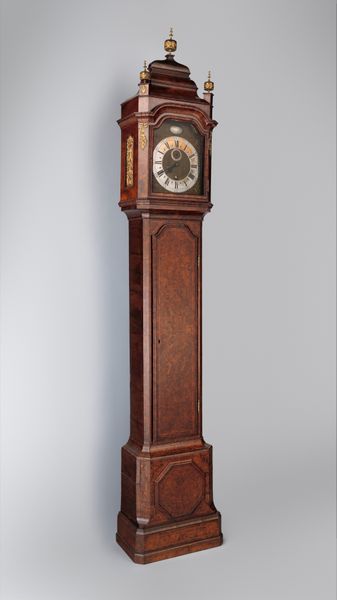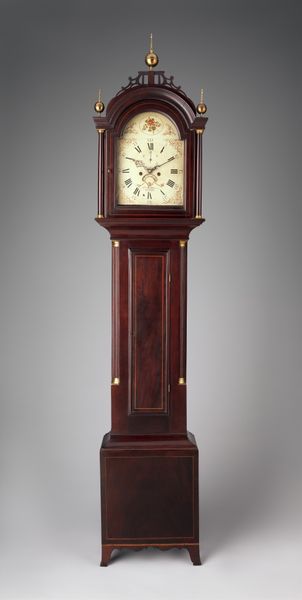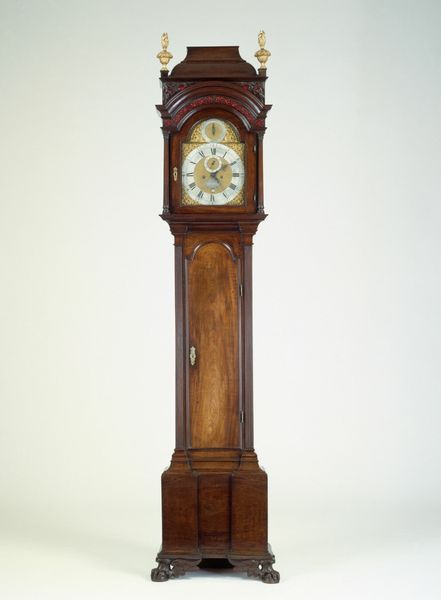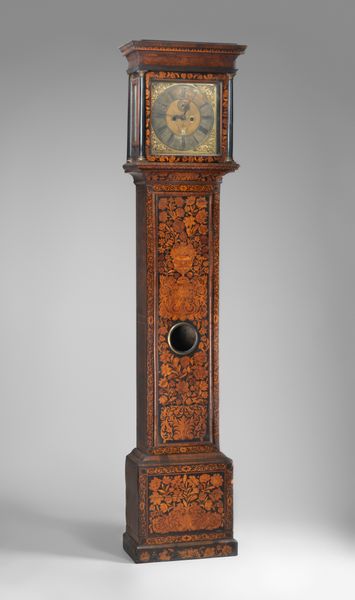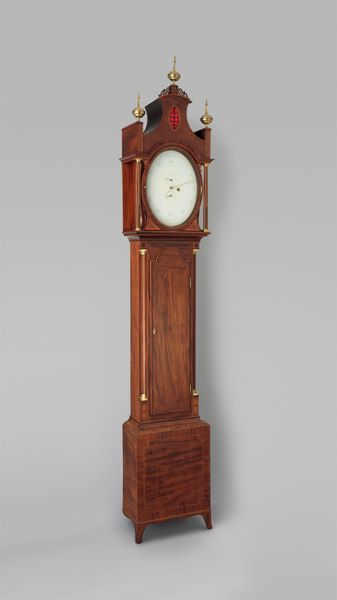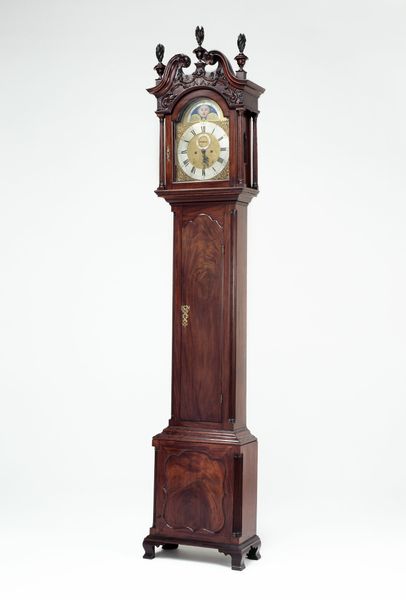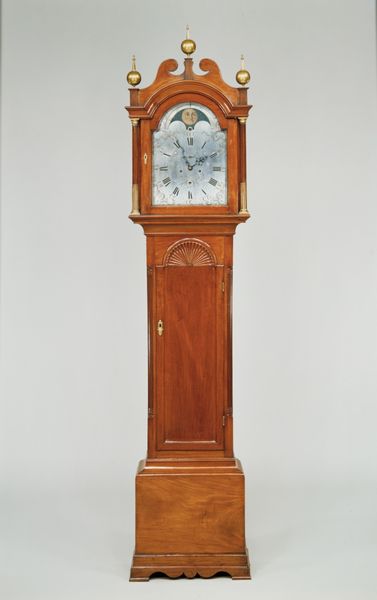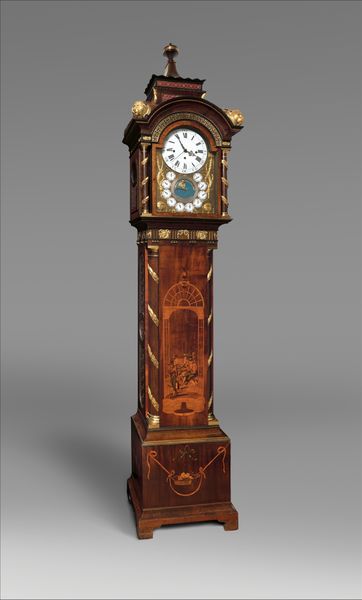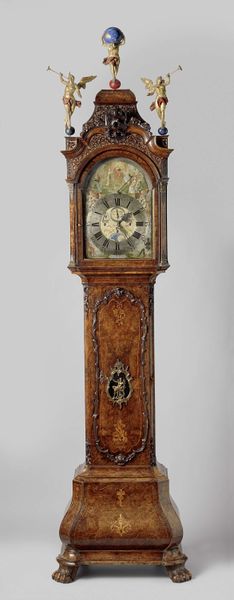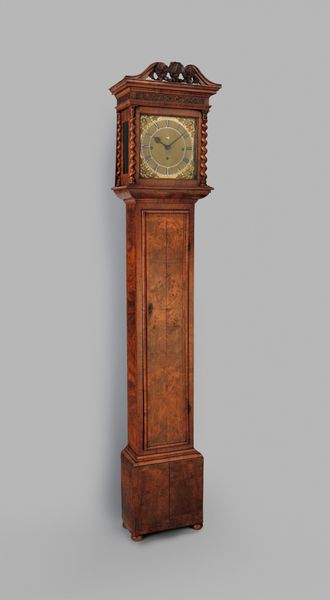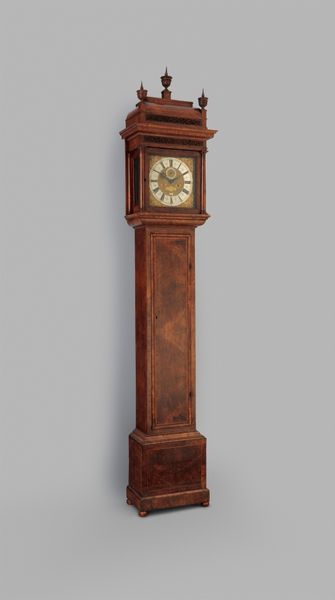
carving, wood
#
carving
#
neoclassicism
#
united-states
#
wood
#
decorative-art
Dimensions: 111 3/4 x 21 1/4 x 9 3/4 in. (283.8 x 54 x 24.8 cm)
Copyright: Public Domain
Editor: Here we have Thomas Seymour’s “Tall Clock,” crafted between 1805 and 1810, residing here at the Met. The wood carving is striking! I am mesmerized by how its rigid, rectangular structure still conveys elegance. What specific aspects of its design catch your eye? Curator: Indeed, let us dissect this marvel of Neoclassical design. The immediate draw is the meticulous symmetry employed across the clock's anatomy, would you agree? The rectangular base, transitioning seamlessly to the elongated body and culminating in that arched bonnet, present a hierarchy, an almost philosophical structuring of form. Note the proportional relationships and the delicate carving. Editor: I see that hierarchy in the three distinct sections, how they relate to each other, especially the repetition of rectangular and arched elements, with their carefully carved frames. Curator: Precisely. Seymour also exhibits a masterful control of texture. The eye moves from the smooth panels of mahogany to the more animated grain of the burl veneer. And how does the brass inlay serve, in your view? Editor: It highlights the wood's natural beauty and offers a contrasting material texture to emphasize the clock's shape. I’m also starting to think about this as more than just an object. It’s a study in the considered application of materials, structure and form. Curator: It certainly presents us with an object lesson on the intrinsic values within a work of art. What started out as an introduction of an object can lead to the introduction of new perspectives.
Comments
No comments
Be the first to comment and join the conversation on the ultimate creative platform.
